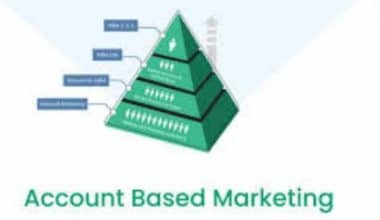Pricing, as it is known in economics and finance, is the act of determining the worth of a product or service. Pricing occurs when a company chooses how much a client must pay for a product or service. Learn what pricing is, how it compares to cost, and some popular pricing tactics.
What Is Pricing?
Pricing is the process of determining how much money a manufacturer will receive in exchange for services and commodities. The pricing approach is used to change the cost of the producer’s offerings to make them more appealing to both the manufacturer and the client. The average prices charged by the business and the buyer’s estimation of an item’s value in relation to that of rival brands determine pricing.
Every entrepreneur starts a firm with the objective of making money. This objective can be obtained through a firm’s price strategy. When determining the cost of a product or service, the following factors should be considered:
- The distinctiveness of the goods and services
- The market price of comparable goods and services
- The intended market for which the goods and services are produced
- The whole cost of production (raw materials, labor, machinery, transportation, inventory, and so on).
- External factors such as government rules and regulations, policies, the economy, and so on,
Objectives Of Pricing
#1. Survival
The goal of pricing for every company is to set a price that is appropriate for both consumers and the producer in order to survive in the market. Every company is at risk of being pushed out of the market due to fierce competition and changes in client preferences and taste. As a result, while evaluating the cost of a product, all variables and fixed costs must be included. Once the survival phase is complete, the company can pursue more revenues.
#2. Expansion of present profit
Most businesses try to increase their profit margins by analyzing the market’s demand and supply of services and goods. As a result, the demand for the good and its substitute are what determine pricing. If there is a strong demand, the price will be high as well.
Firms enforce cheap prices for goods and services in order to get a significant market share. The strategy increases sales by raising demand and resulting in reduced production costs.
#3. A market for a unique idea
Here, the corporation charges a high price for its highly innovative and cutting-edge technological products and services. The price is expensive due to the high cost of production. Mobile phones and technological devices are two examples.
What is A Pricing Method?
A pricing method is a methodology that businesses use to determine the price of their products. This is the most difficult challenge that a firm has, because the pricing must reflect the present market structure while also complementing the company’s expenses and gaining profits. It must also consider the pricing of competitors’ products, therefore selecting the proper pricing mechanism is critical.
Types of Pricing Method
The pricing strategy is split into two parts:
Cost-Oriented Pricing: It is the foundation for determining the price of finished items, and most businesses use this method to compute the cost of the product. This approach is further subdivided as follows:
- Cost-Plus Pricing: In this pricing model, the producer assesses the cost of sustained production and adds a fixed percentage (also known as markup) to arrive at the selling price. Profit margin is calculated based on total cost (fixed and variable costs).
- Markup Pricing: In this case, a predetermined number or a percentage of the overall cost of a product is added to the product’s end price to determine the selling price.
- Target-Returning Pricing: When a company or organization sets the price of a product to achieve a certain rate of return on investment,
Market-Oriented Pricing Method: In this category, the pricing is based on market research.
Perceived-Value Pricing: In this method, the producer determines the cost by considering the customer’s attitude toward the goods and services, as well as other factors such as product quality, advertisement, promotion, distribution, and so on that influence the customer’s point of view.
- Value pricing: In this case, the corporation delivers a high-quality but low-cost product.
- Going-Rate Pricing: In this strategy, the corporation considers the competitor’s rate as a starting point for determining the price of their goods. Typically, the price of the product will be similar to that of the competitors.
- Auction Pricing: As more people use the internet, this modern pricing strategy is becoming increasingly popular. Many online platforms, such as OLX, Quickr, and eBay, use web sites to buy and sell products to customers.
- Differential pricing: is used when the pricing for distinct groups of customers must be varied. Pricing may vary depending on region, area, product, time, and so on.
What Is the Value of Pricing?
An effective pricing plan helps you increase your market position by gaining the trust of your customers and moving your firm closer to its goals.
Pricing strategies are crucial for a variety of reasons, which may differ from one organization to the next.
Contrary to popular belief, pricing strategies aren’t always about profit margins. For example, you may wish to keep the price of an item or service low in order to maintain your market share and keep competitors out.
What is a Pricing Strategy?
A pricing strategy is a method used by organizations to determine how much they should charge for their goods and services. When pricing products, the connection between margin, price, and selling level is taken into account. As a result, developing the right pricing strategy that promotes business success is both crucial and difficult.
The price is a factor that has a big impact on a company’s revenue. It is an important variable in the company’s financial modeling and has a long-term impact on its income, profits, and investments. Price represents a company’s concept, as well as its behavior toward competitors and the value it provides customers.
Types Of Pricing Strategy
The following are some pricing strategies used by businesses:
#1. Price Gouging
A skimming pricing strategy is a pricing tactic in which a company establishes a high beginning price and progressively reduces it as more competitors enter the market. This is good for companies entering an emerging market. Businesses optimize profits by leveraging the pricing demand of specific markets. They benefit from first-mover advantage, which occurs when they are the first to introduce or promote a product or service. Skimming pricing generates a profit in the early phases of a product’s or service’s market until more competitors emerge and supply increases.
#2. Market penetration pricing
It is the inverse of price gouging. Skimming begins with exorbitant costs, but the penetration pricing technique enters the market with inexpensive prices. This is done to attract the competitors’ existing customer base. Once a trustworthy pool of customers is established, the costs gradually rise. The ability of the business to absorb losses in the early years is crucial to the penetration pricing plan. Large multinational corporations, in particular, use this to gain a solid foothold in developing-country marketplaces.
#3. Expensive pricing
Businesses that use premium pricing approach manufacture high-quality items and offer them to high-income or net-worth consumers. The trick here is to create one-of-a-kind, high-quality designs and products that persuade users to spend such exorbitant prices. The premium pricing approach is aimed towards the market for high-end items.
#4. Low-cost pricing
Customers who desire to save money are targeted by the strategy. The tactic is used by large corporations to give customers the impression that they are in control. Walmart in the United States is an example of a company that offers customer-pleasing deals. This is determined by the overhead expenditures and the worth of the products.
#5. Package pricing
It is, as the name implies, a commercial approach in which a group of commodities is sold together. Typically, the total cost of the goods is less than the cost of the individual things sold separately. This aids in the movement of inventories and the sale of unsold stocks. On low-value items, the method has the ability to generate profits (or prevent losses).
#6. Value Pricing
A comparable concept is premium-based pricing. In this case, the company sets the price depending on the customer’s assessment of the product’s worth. This is best suited for one-of-a-kind products.
#7. Dynamic Pricing
In marketing, a dynamic pricing approach involves altering the price of items based on current market demand.
What is a Pricing Policy?
A pricing policy is a company’s method of determining the market price for a good or service. Pricing rules help businesses maintain profitability by allowing them to sell various products differently. Your company may value having a well-defined pricing policy so that it may make price adjustments rapidly and capitalize on the strengths of its products in one or more areas.
Types of Pricing Policies
Here are some examples of standard pricing policies used by businesses:
#1. Cost-based Pricing policy
A cost-based pricing policy computes the average cost of production for a good or service and then accounts for the desired profit margin. Because it addresses the costs of doing business in a plain and changeable manner, this policy is a classic approach to doing business. If the price of a material used in production rises, you simply raise the price of the good correspondingly. One disadvantage of this policy is that it might be difficult to predict how much to charge ahead of time, especially if the volume of manufacturing varies.
#2. Value-based pricing policy
Some businesses must respond to what customers are willing to pay for a product. Your organization would perform market research on market expectations, consumer preferences, and rivals’ offers to determine this price. Value-based pricing attempts to comprehend the precise aspects that define your individual good. It accomplishes this by:
- Focusing on specific market-based segments: Value-based pricing policies strive to be as tightly focused on the relevant market segment as possible If your organization offers laptops, for example, you would look into laptops with similar size, functional purpose, and typical consumer rather than all computers.
- Examining existing competition: Value-based pricing works best when a corporation can make a meaningful and direct comparison to another product already on the market, just as a consumer would. Consumers’ perceptions of value are heavily influenced by your competition.
- Pricing for added value: Because your organization determines price based on value, it clearly identifies what differentiates your product from the nearest rival and researches the monetary value of that difference. This is the amount you add to your competitor’s price.
#3. Demand-based pricing policy
Depending on the product, consumer demand has distinct characteristics. Demand-based pricing schemes optimize profit by responding to market customer behaviors. The following are some frequent demand-related characteristics that can influence pricing:
- Inelastic demand: occurs when buyers demand the same amount of a thing regardless of price. Governments frequently control inelastic demand marketplaces because people frequently require products for survival, such as utilities or medications.
- Companies can utilize automated pricing, often known as continuous pricing, to respond quickly to changes in demand. This enables them to capitalize on increased demand or rapidly dispose of surpluses.
- Lack of competition: Because demand is typically great and there are no alternatives, innovative or unique products might join a market at the maximum price a buyer is prepared to pay. Price skimming is a practice that optimizes initial earnings before competitors can provide a comparable product.
#4. Competition-based pricing policy
To respond to what competitors are charging for similar products, your company may implement a pricing policy based on competition. When pricing based on competition, your organization examines which market group it wants to appeal to and which competitors it wants to take market share from.
A pricing policy based on competition might be beneficial because it is a simple way to decide price. It can also be both accurate and low-risk, because you already know what your customers are willing to pay for what you’re giving. However, this approach can occasionally lead to your organization overlooking product strengths that could attract higher costs. Because many businesses adopt a competitive pricing philosophy, one company’s incorrect price might lead to widespread pricing errors.
How to Establish a Pricing Policy
Here are the steps to creating a pricing policy that works for your company:
#1. Analyze business requirements
Recognizing your firm’s demands is the first step in developing the best pricing policy arrangement for your organization. Consider your goals for the product you’re releasing to the market as well as your company’s financial situation. Your company’s requirements are most likely determined by:
- The size of the company
- Profitability
- The number of products available
- Competition
- Economic circumstances
- Supply and demand in the market
#2. Product evaluation
Determine whether your product lends itself to one pricing policy over another. Unique products, for example, have far greater earning potential than replica ones from different companies. Important product concerns include the following:
- Production expenses: If your product is costly to manufacture, you may need to stress covering costs. If not, you should consider pricing more deliberately.
- Market demand: Your company may prefer a demand-based pricing policy if you can capitalize on high demand or select a pricing policy to compensate for poor demand.
- Market segmentation: Price can be used to signify a company’s target audience. When deciding on a pricing policy, consider who you want and expect to buy your goods.
- Novelty: Consider how new your product is to the market and how long your organization can sustain a competitive advantage.
#3. Research your competition
Whatever price policy you adopt, analyzing your competitors is a vital business practice that will help you understand your product’s potential, market trends, and competitors’ pricing strategies. You might also discover something that will help you with your product development and commercial initiatives. For example, you may find consumer grievances with competitors’ products and transform that knowledge into new items or services that you price using a value-based policy.
#4. Fix your price
Set the price that your pricing policy requires once you’ve chosen which pricing strategy will help your business make sufficient revenues, increase market share, and strategize for long-term success. Your company can use research insights, sales data, and predictions to determine whether your price is acceptable and likely to accomplish the desired goals.
Who Defines Pricing?
Product managers do sometimes own the pricing of their goods, but this isn’t always the case. They should, at the very least, be one of the primary participants in determining how much to charge. However, this part of the product is occasionally elevated to higher levels of management.
What are the 4 Approaches To Pricing?
Replacement cost, market comparison, discounted cash flow/net present value, and value comparison are four pricing methods that can help you set a price for what you sell.
What is The Theory Of Pricing?
The theory of price is an economic theory that asserts that the price of a certain commodity or service at any given point is determined by the connection between its supply and demand. Prices should rise when demand outnumbers supply and fall when supply outnumbers demand.
What is Pricing, According to Philip Kotler?
According to Philip Kotler, “price is the marketing-mix element that generates revenue; the others generate costs.”
In Conclusion,
Pricing is a phrase used to describe the decision-making process that occurs before a product or service is valued.
Your price must express to potential buyers how much you value your brand, product, and customers. It’s one of the first things a customer thinks about while considering whether or not to buy your product or service. That is why an exact estimate is required.
- COMPETITOR: Meaning, Example, Analysis, Types & Advantages
- COMPETITOR WEBSITE ANALYSIS: Top 10+ Web Analytic Free Tools in 2023
- PRICING STRATEGIES MARKETING: Definition, Types & How to Choose
- COMPETITOR ANALYSIS TOOL: Top 11+ Competitor Analysis Tools






